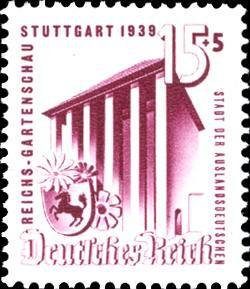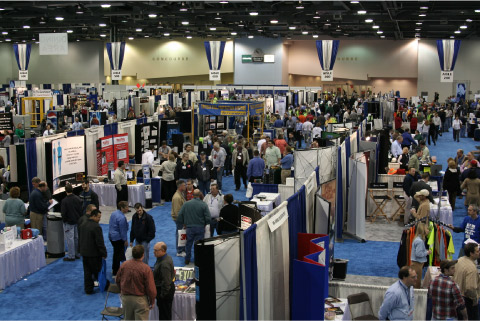Stamp: Exhibition Pavilion, Stuttgart Coat of arms (Austria 1939)
Exhibition Pavilion, Stuttgart Coat of arms (Austria 1939)
22 April (Austria ) within release German Realm stamps used in Austria 1938-1945 goes into circulation Stamp Exhibition Pavilion, Stuttgart Coat of arms face value 15+5 German reichspfennig
| Stamp Exhibition Pavilion, Stuttgart Coat of arms in catalogues | |
|---|---|
| Michel: | Mi: DR-AT 693 |
| ANK: | ANK: DR-AT 693 |
Stamp is vertical format.
Mi: DR 693 Used stamp only. Stamp or cut off must bear readable cancellation from Austria during the occupation period or before the expiry date.Also in the issue German Realm stamps used in Austria 1938-1945:
- Stamp - Exhibition Pavilion, Stuttgart Coat of arms face value 6+4;
- Stamp - Exhibition Pavilion, Stuttgart Coat of arms face value 15+5;
Stamp Exhibition Pavilion, Stuttgart Coat of arms it reflects the thematic directions:
A building or edifice is a structure with a roof and walls standing more or less permanently in one place, such as a house or factory. Buildings come in a variety of sizes, shapes and functions, and have been adapted throughout history for a wide number of factors, from building materials available, to weather conditions, to land prices, ground conditions, specific uses and aesthetic reasons. Buildings serve several needs of society – primarily as shelter from weather, security, living space, privacy, to store belongings, and to comfortably live and work. A building as a shelter represents a physical division of the human habitat (a place of comfort and safety) and the outside (a place that at times may be harsh and harmful).
A coat of arms is an heraldic visual design on an escutcheon (i.e. shield), surcoat, or tabard. The coat of arms on an escutcheon forms the central element of the full heraldic achievement which in its whole consists of shield, supporters, crest, and motto. A coat of arms is traditionally unique to an individual person, family (except in the United Kingdom), state, organisation or corporation.
An exposition, in the most general sense, is an organized presentation and display of a selection of items. In practice, exhibitions usually occur within museums, galleries and exhibition halls, and World's fairs. Exhibitions can include many things such as art in both major museums and smaller galleries, interpretive exhibitions, natural history museums and history museums, and also varieties such as more commercially focused exhibitions and trade fairs.
The horse (Equus ferus caballus) is one of two extant subspecies of Equus ferus. It is an odd-toed ungulate mammal belonging to the taxonomic family Equidae. The horse has evolved over the past 45 to 55 million years from a small multi-toed creature, Eohippus, into the large, single-toed animal of today. Humans began to domesticate horses around 4000 BC, and their domestication is believed to have been widespread by 3000 BC. Horses in the subspecies caballus are domesticated, although some domesticated populations live in the wild as feral horses. These feral populations are not true wild horses, as this term is used to describe horses that have never been domesticated, such as the endangered Przewalski's horse, a separate subspecies, and the only remaining true wild horse. There is an extensive, specialized vocabulary used to describe equine-related concepts, covering everything from anatomy to life stages, size, colors, markings, breeds, locomotion, and behavior.




